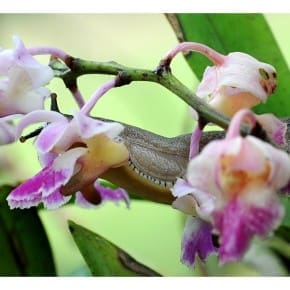Even as male weaverbirds build their love nests, tenants are waiting in the wings for real estate prices to crash
Imagine that the lady you are wooing would accept your proposal only if she is impressed with the houses you have built for her. Such is the tale of the weaver bird.
Imagine that the lady you are wooing would accept your proposal only if she is impressed with the houses you have built for her. Such is the tale of the weaver bird.
 |
| A male baya weaver looks out longingly for the lady who will grace his nest |
The rains are almost here. Everywhere I have gone in the last three weeks, I have seen weaverbirds busy at work – both Baya Weavers (Ploceus phillippinus) and Streaked Weavers (Ploceus manyar).
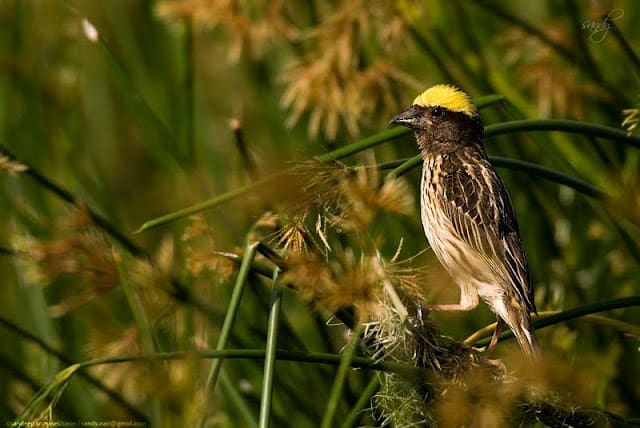 |
| A male streaked weaver |
The Baya and Streaked weavers can be best distinguished by observing the breast plumage — the Baya Weaver’s throat and breast are tinged with yellow with minimal streaking, while the Streaked Weaver has heavy streaking in the same area. Females are plain brown with thick conical beaks, which are paler than that of the males.
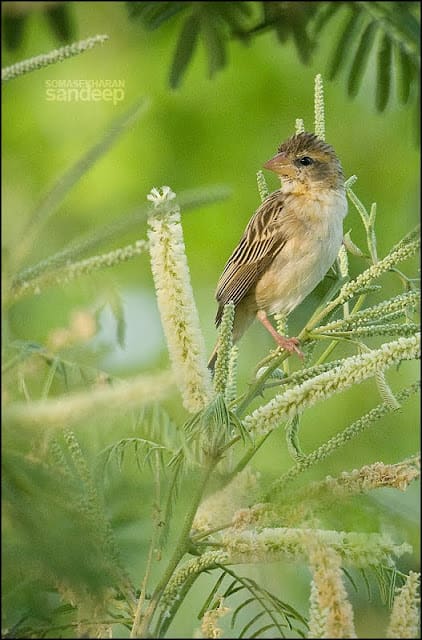 |
| A female baya weaver looking pretty ahead of the breeding season |
Weavers build nests in colonies. Their nests are elongated, pear-shaped and pendulous, and are mostly built in places that offer ready access to water. Nesting places would be typically resounding with a cacophony of screeches and chirps from the nesting males. If you wander close to them, the birds instinctively take flight in a flock. To observe them, the best option is to maintain a respectful a distance, use a hide, or remain still long enough for the birds to get used to your presence.
 |
| A male baya weaver toils at the nest, which is near helmet stage |
The nest-building male uses long blades of grass, clinging acrobatically to the nest as he weaves them into the nest. Once they complete the first part of the nest — which is called the helmet stage (where the bottom of the nest looks like a helmet) — the nest chamber is split into two halves.
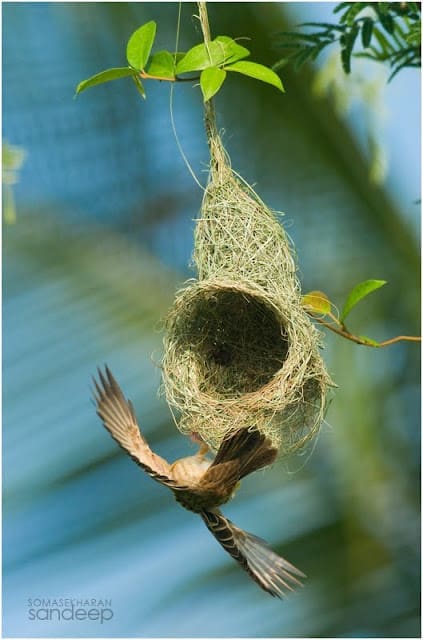 |
| Acrobatics are the need of the hour, when things have to be finished on time |
At this stage the potential missus arrives and our male weaver proudly beckons her by flapping his wings. The female inspects the construction thoroughly and moves on if she is not interested, and the male abandons the nest and begins work on a new one. If she picks the nest, they work together to add an approach tube, pointing downward, through which the birds enter and leave the nest.
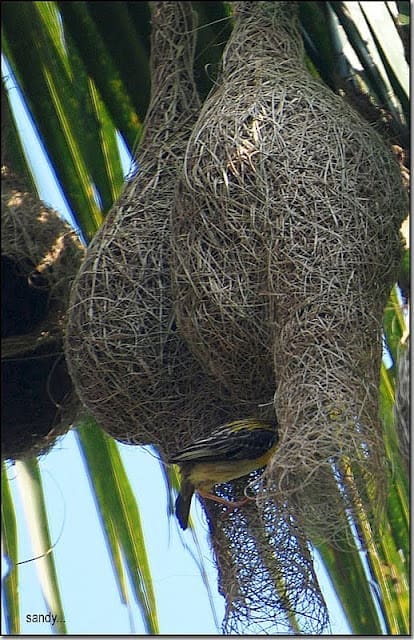 |
| A completed nest with the approach tube |
The abandonment of rejected nests bring into the picture a few opportunists. A pair of White-rumped Munias seemed to like one of the half-finished nests, and decided to check out the comforts within. Interestingly, the male weaver that was building this nest started working on another half-done nest while the munia couple were trying to fit themselves in. At times even mice are known to occupy abandoned nests, probably because the unique construction makes the houses snake-proof.
 |
| Isn’t this comfy, honey? I just hope they will let us stay here… |
The nest-building activity ends once the female picks a nest. She lays 2-4 eggs, which hatch in a little more than a couple of weeks. In another couple of weeks the chicks fledge and leave the nest.
Note: No weaverbird nests were uncovered, touched or birds harmed in any way — intentionally or unintentionally — in the making of this photo-essay.
Text and photos: Sandeep Somasekharan
Latest posts by Sandy (see all)
- Costa Rica Diaries – Parting Gifts - May 5, 2024
- Costa Rica Day 6 – Resplendent Quetzal: Part Bird, Part God and Full-Time Economy Driver - April 17, 2024
- Costa Rica Day 5 – Toucan Trees and Wild Dreams Coming True - March 22, 2024

